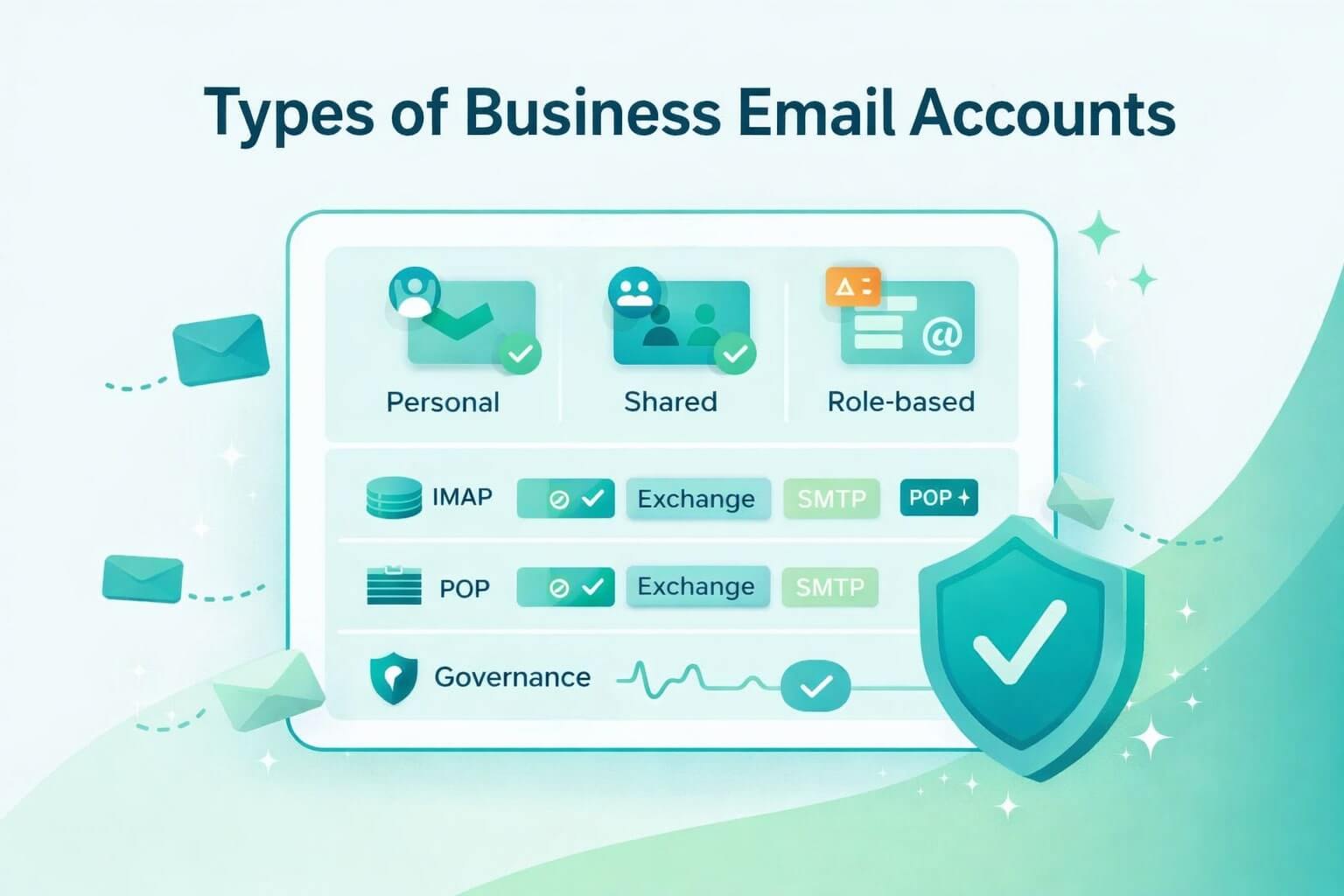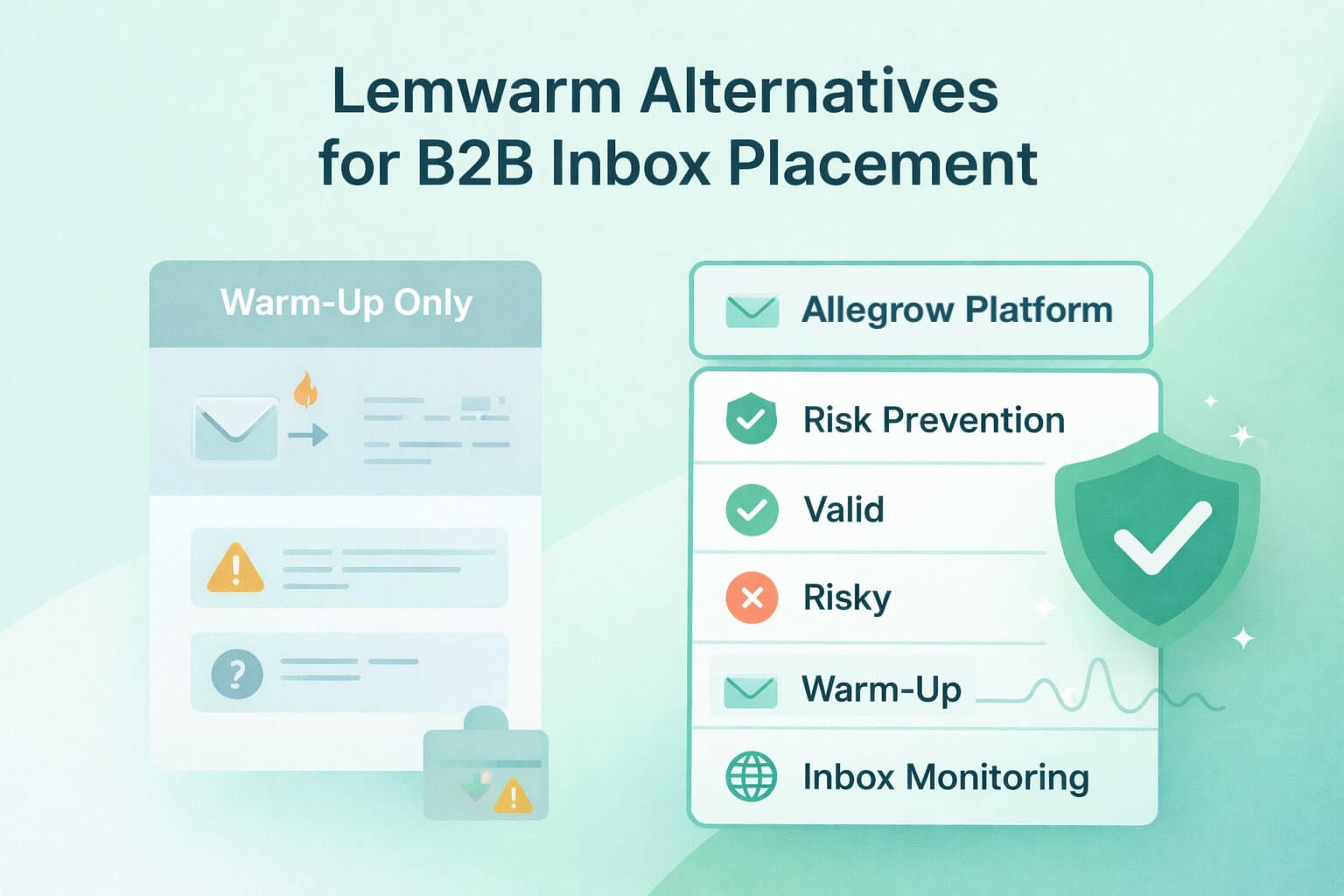Domain Reputation and IP Reputation both affect deliverability and factor into the decisions email providers make on where to place the emails you send. This can either be the spam/promotions folder or the primary inbox, so if you want to receive high open and reply rates and make sure contacts see your emails, it’s important to understand how both work.
Although both types of reputation can affect where your emails land, IP Reputation (meaning the Internet Protocol (IP) address which is associated with emails that you send), is completely separate from your domain reputation.
Also, it’s important to note that email providers will interpret data from each of these factors differently. This means in the world of email filtering, for a go-to-market use case, one can be more important than the other.
TL;DR: Domain reputation affects deliverability more than IP reputation in modern email filtering systems. Email providers trust domains with consistent positive engagement—like replies and low spam complaints—more than IPs. IP-based filtering is less reliable due to shared, rotating servers. It matters less than sender behavior and authentication. Improve deliverability by monitoring domain-level performance, optimizing copy, and using SPF/DKIM/DMARC. Dedicated IPs offer limited value unless sending high volumes. Allegrow strengthens domain reputation with warm-up automation, inbox placement tracking, and actionable benchmarks—all in one platform. Many users see 20–50% increases in open rates after implementation.
What is IP reputation, and how does it differs from domain reputation?
Domain Reputation is essentially a score that an email provider has created based on how recipients have engaged with your email domain in the past. (Your email domain is whatever comes after the @ symbol in the email – so for us, that’s usually ‘allegrow.co’). This score is then used by the email provider, among other factors (like the content), to decide if they should place your email in the primary inbox or a spam/unfocused folder. You can consider this domain reputation as forming a ‘credit score’ for your email domain. If people regularly; respond to, mark your messages as important and rarely mark them as spam – you’ll have a good credit score, and your emails are likely to land in the primary inbox. Whereas if more recipients ignore emails from your domain, rarely open them and don’t usually reply to them – you’ll have a low score, and email providers draw the conclusion they’d be doing their users a favor by filtering your message out of sight and into the spam folder.
IP reputation, on the other hand, is linked to the server which sends your message and can be dynamic in many cases (meaning it can change regularly). The sending IP associated with your emails will look something like this ‘127.0.0.1’ (4 sets of numerals separated by periods) and is mainly determined by your email service provider, which in most cases would be a Google/Microsoft operated server or if you use an email delivery service like AWS SES or SendGrid, it would be a shared or dedicated IP which they assign.
IP reputation is based on the activity an email provider has monitored and associated with your IP address and also any reports/signals of misuse. Reports of spam or an unusual change in sending activity can lead to an IP reputation decline. However, email providers have moved away from using data on IPs as the main way they make general filtering decisions. Instead, they are more focused on using IP reputation to limit the exposure of potentially malicious servers on their users.
Therefore, domain reputation is specific to your domain and business, whereas IP reputation is linked to the server/service which sends your emails and is more likely to change. Email providers nowadays are weighing email filtering decisions towards domain reputation based on the fact that domains are more specific to the business which is sending the email and easier to track.
Why are email providers prioritizing domain reputation?
IP reputation helps email providers detect unusual activity on particular servers, however, it does not provide an accurate indication of which businesses recipients want to hear from and engage with for a few primary reasons:
- IPs across most business users are dynamic. This is because your email provider will regularly rotate IPs. This means they are changed frequently, which makes it hard to keep track of a sender's complete history.
- Spammers can change their IPs / the servers they use in an attempt to stop reports affecting where their emails land. Therefore, email providers would not be able to identify misuse and filter as large a percentage of emails correctly if they relied on IPs primarily for filtering.
- The fact that IPs are more commonly used across multiple senders at the same time and re-used in a shorter time frame than domains - means that email providers would be more likely to wrongly assign the reputation which was created by one sender to a different sender. This makes the method of calculating reputation based on IP address less reliable.
Therefore, email providers have started to use domain reputation as a more specific and reliable way to gather an impression of the engagement and history of a sender - meaning marketers can infer - Domain Reputation is more likely to influence where email providers filter your emails. In fact, even SendGrid who is one of the largest providers of dedicated IPs, has noted that there has been a ‘sharp move towards domain reputation’ when ESPs are making filtering decisions.
How do you measure and track your domain reputation?
Email Domain Reputation is specifically based on how recipients interact with your emails on average, not your search engine presence. Therefore, domains which receive high levels of engagement from the recipients of their messages will have a high domain reputation, whereas domains that receive low engagement will have a low reputation.
This can be quantified based on the percentage of your average email volume that lands in spam, promotions or unfocused folders - rather than the primary inbox. For example, if I send 1,000 emails in a day, 400 of them land in spam folders rather than the primary inbox, my sender reputation would be 60% - as that’s the percentage of my emails which reach the primary inbox.
The challenge with being able to calculate this and monitor this for marketers and email administrators is that in order to definitively know the percentage, you would need to be able to:
- See/check inside the inboxes of recipients receiving emails from your domain to record how many were actually landing in primary inboxes rather than unfocused folders.
- Send emails reliably across a large enough sample size of email domains to calculate the percentage accurately.
This is why solutions like Allegrow have risen in popularity to monitor and calculate domain reputation each day for admins. We achieve this by sending emails in a varied and natural way to other Allegrow users and monitoring where the emails land, then reporting this in real-time and storing the data for long-term analysis.
How can you check your IP reputation and spot blacklist issues?
Although IP reputation is no longer as commonly used by major email providers to make filtering decisions, you can check IP blacklists by entering your email IP address into this free resource from MX toolbox.
If you’re using G Suite or O365 as your email provider, your IP address will be shared across many people. This is why it might be common to find your IP address listed on a blacklist, although please note that this is unlikely to impact your inbox placement to recipients as the world's major email providers (Google, Microsoft and Apple), do not use data from third-party blacklists to make filtering decisions. They instead use their own data and filtering algorithms.
Whereas, if you’re using an email service (like amazon SES), your provider will either place you on a dedicated or shared IP. It’s important to note that your shared IP will be changed regularly, and many people overestimate the advantages of a dedicated IP in comparison.
If you do find your IP on a blacklist, you may be able to request removal directly from the blacklist provider, however, it’s very important to note that many blacklists have little to no impact on deliverability and attempt to charge fees for removal.
Why does sending authenticated emails improve deliverability?
The primary authentication protocols to be aware of are SPF, DKIM and DMARC. These protocols increase deliverability because they show email providers you have taken steps to secure your email systems and demonstrate to recipients that you are indeed who you appear to be.
This decreases the potential risk associated with a recipient receiving your email, as people who are attempting to impersonate or hijack another sender's email will not be able to pass the tests of these authentication protocols. While many spammers will not take the time and effort to set up and manage authentication for SPF DKIM and DMARC. If you’re a Google Workspace user we have a full guide available on how to test and set up each of these.
How can you increase domain reputation and should you use a dedicated IP?
You can increase domain by improving the engagement that your domain receives on average. This can be achieved by writing more engaging content, which leads more recipients to respond to and open your emails. Platforms such as Allegrow are also designed to increase positive engagement on your domain. Warming platforms conduct this through the following kinds of interactions being conducted on your domain automatically:
- Generating responses to emails that have been sent by you.
- Marking your emails as important inside the inboxes of other members in the network.
- Sending inbound emails to your inbox from other accounts in the network.
- Moving your emails from spam - into the priority inbox (a portion of the time) when they land there by marking them as ‘not spam’. Which signals to ISPs they made a mistake placing your message there.
Using a dedicated IP for your sending means only your own email traffic will be sent through the IP associated with your emails. This has the advantage of giving you full control over your IP reputation as no one else’s traffic can affect you. This may initially sound much better than a shared IP, however, it’s worth considering that for the following reasons why a dedicated IP may not be the best choice, unless you are sending millions of emails each month:
- You’ll need to take responsibility for building up your dedicated IP’s sender reputation. (as there’s no other activity occurring on the IP to assist you).
- Dedicated IPs are going to directly reflect any mistakes you make in your email program.
- Without very high and consistent volume, your IP is going to show spikes in sending, which is not ideal for appearing low risk to ESPs.
- In most cases, the traffic from other senders on a shared IP can actually helps, rather than hurts your IP reputation.
- Considering filtering is now weighted towards domain reputation, a dedicated IP may not be necessary in a lot of cases.





.jpg)